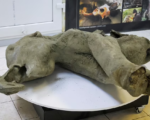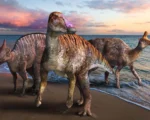Giant Mesosaurs Discovered in Uruguay: A New Chapter in Aquatic Reptile Evolution
Recent fossil discoveries in Uruguay have unveiled a surprising aspect of mesosaur evolution: the existence of much larger specimens than previously known. These aquatic reptiles, which thrived in the Early Permian epoch over 280 million years ago, are now understood to have reached sizes more than double those of earlier documented adults. The fossils include skull fragments and bones that suggest some mature mesosaurs grew between 1.5 to 2.5 meters in length, shedding new light on the species’ evolutionary potential and ecological role.
Exceptional Finds from the Mangrullo Formation
The fossils were unearthed from the Mangrullo Formation in northern Uruguay, a site renowned for its remarkable fossil preservation. Led by Dr. Graciela Piñeiro of Universidad de la República, researchers analyzed two fragmented skulls and associated bones, comparing them with over 1,000 previously studied mesosaur specimens. These new finds, with skulls measuring 15–20 cm, point to significantly larger adults than previously observed. This discovery not only redefines mesosaur size estimates but also raises questions about their life history and environmental adaptations.
Reevaluating Mesosaur Growth and Mortality Patterns
Earlier studies suggested that the smaller sizes of previously discovered mesosaurs might represent typical adults. However, this new research posits that these smaller specimens were likely juveniles or subadults. The researchers also examined environmental factors, such as Bergmann’s rule—which links larger body sizes to colder climates—but found that growth patterns and age stages better explain the size variation. This indicates that past mass mortality events may have skewed earlier data, focusing on younger individuals rather than showcasing the species’ full growth potential.
Implications for Understanding Early Aquatic Ecosystems
The discovery of larger mesosaurs expands our understanding of their role in Early Permian ecosystems. As apex or near-apex predators, these larger individuals could have exerted significant influence over their aquatic environments. This finding also highlights the importance of continued fossil exploration in regions like Uruguay, where well-preserved specimens can unlock critical insights into the evolution of ancient life. As research progresses, mesosaurs may offer further clues about the dynamics of early aquatic ecosystems and the evolutionary pathways of reptiles.


















